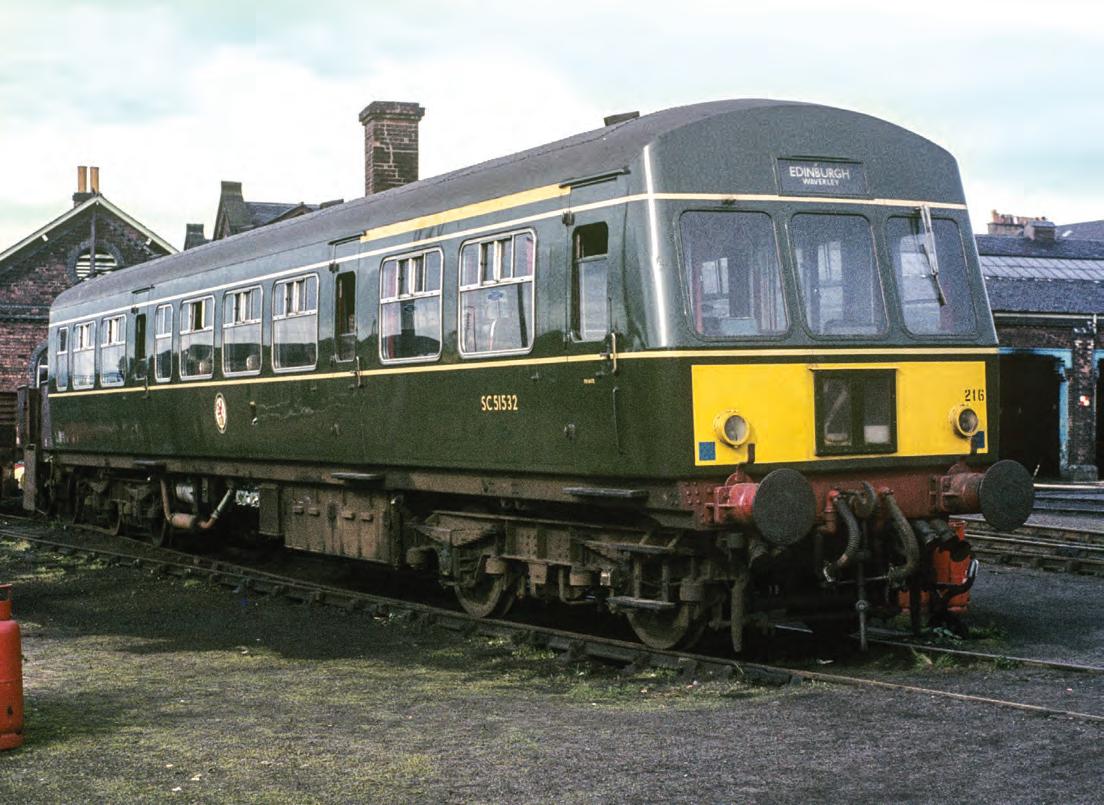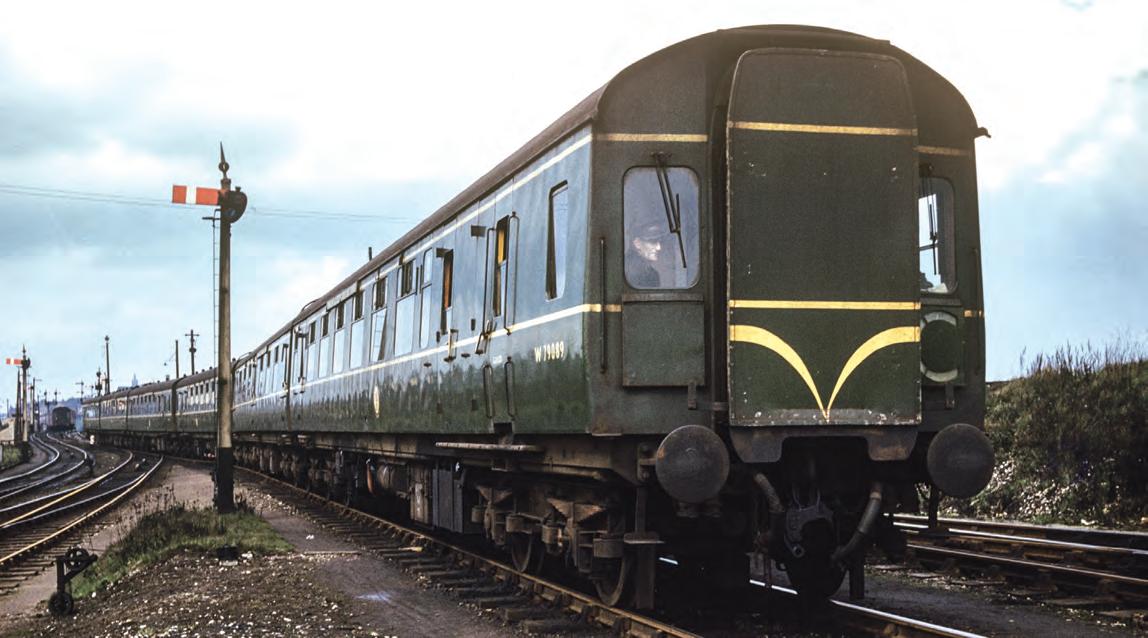
2 minute read
The Early Derby ‘Lightweight’ DMUs
After construction of the first eight ‘Derby Lightweight’ units for the West Riding, the engine and transmission arrangements were altered to be more like the ex-GWR railcars, with a pair of 150hp AEC engines coupled to mechanical transmission on the motor coaches. The multiple unit control system also changed, with the revised system being coded yellow diamond. Approximately 200 cars of this type were built. Most were in 2-car sets comprising a driving motor brake third (second from 1956) and a driving trailer composite, which included first class accommodation. A few 2-car sets were built as ‘power-twins’ with engines on both cars. Five 4-car sets and two single units were also built. The unit ends differed from the early ‘red triangle’ variant by incorporating a lower centre marker light and revised MU jumpers. On most units, the cab front windows were divided into two parts by a horizontal bar. This 2-car unit is at Winslow on the Bletchley-Oxford line in 1967. The yellow diamond coupling code markings are visible on the unit end, either side of the yellow warning panel. [R.Carroll Collection]
The later ‘yellow diamond’ Derby Lightweight units were allocated to the Eastern, North Eastern and London Midland Regions. The NER batch included five 4-car sets for working services between Newcastle and Middlesbrough via Sunderland. On the 4-car sets, the guard’s accommodation and van area were included in one of the intermediate trailers. There was a driving motor composite at one end and a driving motor second at the other. This 8-car formation, with the driving motor composite of a 4-car set nearest, is at Waskerley on the RCTS ‘The North Eastern No.2 Rail Tour’ of 10 April 1965. [R.Carroll Collection]

A few DMU cars gained full yellow ends whilst still in green livery, as on Derby Lightweight driving trailer composite M79607 in the old Hellifield steam MPD yard on 3 June 1967. This car has gained a yellow first class band, which was rare on DMUs in green livery outside the Scottish Region. This car and its adjoining driving motor brake second are from the first ‘yellow diamond’ batch built for West Cumberland lines. The motor brakes of this batch differed from later batches by having a single large bodyside window between the van area and passenger door. Later batches had two small windows and a larger van area. The three cab front windows were each a single pane on this batch. The yellow diamond coupling code has been placed onto a black background to make it stand out against the yellow end. [R.Carroll Collection]

A 2-car ‘Derby Lightweight’ unit comprising driving motor brake second M79177 and driving trailer composite M79467, at Preston on 13 May 1967. The motor brake has been repainted into an early style of BR Corporate ‘Rail Blue’ livery, introduced generally in 1966, with a small yellow warning panel. Full yellow ends became standard from 1967. The unit has bars across the door droplights to prevent passengers from leaning out on account of tight clearances on the Cumbrian Coast lines. North West England became the last stronghold of these yellow diamond units, with final withdrawals taking place in 1969. [R.Carroll Collection]

Some ‘Derby Lightweight’ units carried Rail Blue livery with full yellow ends, although many were withdrawn still in green livery. This twin unit is in blue livery but still with red buffer beam, at Bicester London Road on a service for Oxford on 30 December 1967; this was the last Saturday of services on the Oxford to Cambridge line, apart from the Bletchley to Bedford stretch, which escaped closure. The Bicester-Oxford section subsequently reopened and this is now the site of Bicester Village station, with through services to Marylebone via a new connection to the former GWR line through Bicester. [R.Carroll Collection]

Two single unit ‘Derby Lightweights’ were built for the Bletchley to Banbury via Buckingham line. One of these units later became test coach ‘Iris’. It is seen at the Crewe open day on 22 September 1979. This vehicle had been M79900. It was later preserved and restored to passenger configuration. A 2-car set from the first West Cumberland batch also survives as does a 2-car battery-powered unit which was built using the same body design as the Derby Lightweights. [R.Carroll Collection]






